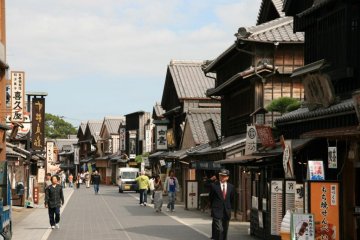
ขนมอากาฟุกุโมจิย่านโอคาเงะโยโกะโจ
Chris Glennขนมญี่ปุ่นแบบดั้งเดิมจากร้านอากาฟุกุโบราณ ล้อมรอบไปด้วยบ้านเรือน ร้านค้าและร้านแผงลอยแบบดั้งเดิมที่นำนักท่องเที่ยวย้อนกลับไปในศตวรรษที่ 19

Oharai-machi (おはらい町) is a small traditional town that prospered outside the gates of the entrance of Ise Jingu Shrine — Japan's most sacred shrine. As a traditional approach, it spans almost one kilometer in length and is lined with a variety of shops and restaurants.
From Isuzugawa Station (Kintetsu-Toba Line), it's six minutes by bus. Oharai-machi is located at the entrance of the Inner Ise Shrine.

ขนมญี่ปุ่นแบบดั้งเดิมจากร้านอากาฟุกุโบราณ ล้อมรอบไปด้วยบ้านเรือน ร้านค้าและร้านแผงลอยแบบดั้งเดิมที่นำนักท่องเที่ยวย้อนกลับไปในศตวรรษที่ 19
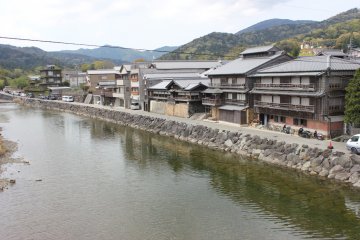
โอคาเงะ โยโกะโชผสมผสานกลิ่นอายย้อนอดีตของเมืองในสมัยเอโดะและเมจิเข้าด้วยกัน ย่านการค้าเล็ก ๆ แห่งนี้จะทำให้นักท่องเที่ยวย้อนเวลากลับไปสู่ช่วงศตวรรษที่ 19 แถบนี้เต็มไปด้วยร้านค้าและร้านอาหารที่น่าทึ่งกว่า 50 ร้านในรัศมีพื้นที่เก้าตารางกิโลเมตร

พิพิธภัณฑ์ Mochi-Kaido Monogatari เป็นพิพิธภัณฑ์เล็กๆ เข้าชมได้ฟรี ที่โอะกะเกะ โยะโคะโชะ (Okage Yokocho) เป็นพิพิธภัณฑ์ที่แสดงเรื่องราวเกี่ยวกับขนมหวานแบบดั้งเดิม
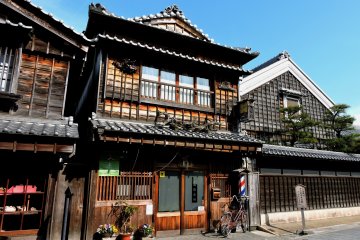
Okage Yokocho เป็นพื้นที่ที่ตั้งอยู่บนถนนเก่าแก่มุ่งตรงสู่ศาลเจ้าอิเสะ ไนกุ (Ise Naiku) เรียงรายไปด้วยร้านค้า ร้านน้ำชา และร้านค้าขายของที่ระลึก ที่ตกแต่งในสไตล์เอะโดะ และเมจิต้นๆ

ริ้มรสขนมถั่วแดง ขนมที่มีชื่อเสียงของร้านอะคะฟุกุ (Akafuku) ในโอะกะเกะ โยะโคะโชะ (Okage Yokocho) ใกล้ๆ กับศาลเจ้าอิเสะ (Ise)

ดูเหมือนศาลเจ้า วัดและปราสาทเล็กๆ รวมเข้ากัน อาคารฮินจิซุกัน แบบดั้งเดิมของญี่ปุ่นนี้ได้ดำเนินการเป็นโรงแรมพิเศษสำหรับพระบรมวงศานุวงศ์
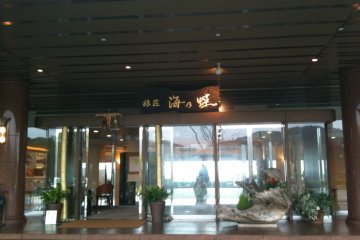
โรงแรมรีสอร์ตออนเซนแสนเลอค่าที่อยู่ริมทะเลและมีทั้งหาดส่วนตัว บาร์ ห้องเล่นเกม และอื่น ๆ อีกมากมาย
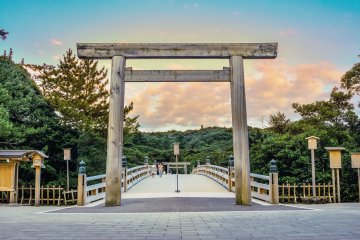
Located in Mie Prefecture, the Ise Grand Shrine is a Shinto shrine dedicated to the sun goddess. Supposedly, the shrine or “Jingu” as it is commonly called, is home to the Sacred Mirror; this mirror was the one that drew Amaterasu from hiding and brought light back to the world. In reality, Ise Jingu is a complex of shrines centered around two main shrines, Naiku and Geku. The inner shrine is Naiku, said to be where Amaterasu dwells even today. Whereas the outer shrine, Geku, is located about six kilometers from Naiku and dedicated to Toyouke-Omikami, the god of agriculture, rice, and harvest. There are an additional 123 shrines in Ise City surrounding both Naiku and Geku. The shrine buildings at Naiku and Geku are rebuilt every 20 years based upon a Shinto belief of death and renewal. The shrine was established in 4 BCE when Princess Yamatohime no Mikoto wandered for twenty years looking for a place to worship the sun goddess. Upon arriving in Ise, Yamatohime received a message from Amaterasu saying that this was the land where she wished to reside. Today, only a person of the royal lineage may be the high priest or priestess of Ise Jingu.

In Mie Prefecture, not far from the city of Futami, which belongs to the city of Ise, are the Meoto Iwa rocks, which are also called" The Married Rocks ". These two sacred rocks in the sea near the coast are not far from the Futami-Okitama Shrine, the Ryuugu Shrine and also near the famous Ise Shrine itself. The two rocks are connected with a so-called Shimenawa. This is a ritual rope made of rice straw. This fact gave them the nickname "The Married Rocks" In the belief of the Shinto religion, these two rocks represent the union of the pair of gods Izanagi and Izanami, who, according to legend, are the two central gods "Kami" in the myth of the origin of Japan.
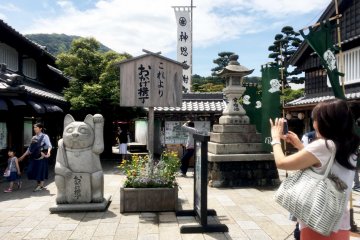
เดินเที่ยวย้อนอดีตที่โอะฮะไรมะชิ (Oharaimachi) ถนนช้อปปิ้งยาว 800 เมตร บนเส้นทางสู่ศาลเจ้าอิเสะ